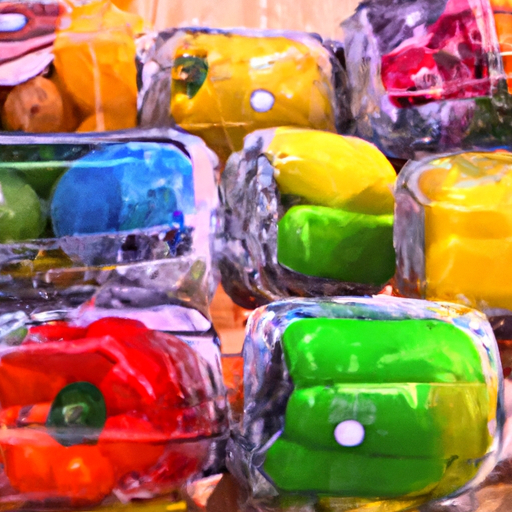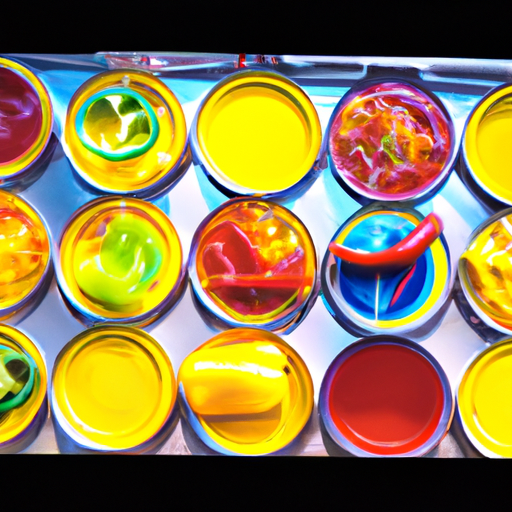
-
Table of Contents
- Edible Packaging: Reducing Waste in the Food Industry
- What is Edible Packaging?
- The Benefits of Edible Packaging
- 1. Reduction in Plastic Waste
- 2. Improved Food Safety
- 3. Convenience and Portability
- 4. Customizable and Versatile
- Examples of Edible Packaging
- 1. WikiFoods
- 2. Skipping Rocks Lab
- 3. Apeel Sciences
- The Challenges and Future Outlook
- 1. Scalability
- 2. Taste and Texture
- 3. Regulatory Approval
- Conclusion
Edible Packaging: Reducing Waste in the Food Industry

As the world grapples with the growing problem of plastic waste, innovative solutions are emerging to tackle this environmental challenge. One such solution gaining traction is edible packaging in the food industry. Edible packaging offers a promising alternative to traditional packaging materials, reducing waste and providing a more sustainable option for consumers. In this article, we will explore the concept of edible packaging, its benefits, and its potential impact on reducing waste in the food industry.
What is Edible Packaging?
Edible packaging refers to packaging materials that are safe for consumption along with the food they contain. These materials are typically made from natural ingredients such as seaweed, starches, proteins, or other plant-based materials. Edible packaging can take various forms, including films, coatings, pouches, and even edible containers.
The idea behind edible packaging is to provide a protective barrier for food products while eliminating the need for additional packaging waste. Instead of disposing of the packaging after use, consumers can simply consume it along with the food, reducing the overall waste generated.
The Benefits of Edible Packaging
Edible packaging offers several benefits that make it an attractive option for both consumers and the food industry. Let’s explore some of these benefits:
1. Reduction in Plastic Waste
Plastic waste is a significant environmental concern, with millions of tons of plastic ending up in landfills and oceans each year. By replacing traditional plastic packaging with edible alternatives, the food industry can significantly reduce its contribution to this waste stream. Edible packaging provides a sustainable solution that eliminates the need for disposal, reducing the burden on our planet.
2. Improved Food Safety
Edible packaging can enhance food safety by acting as a protective barrier against contaminants. These materials can help extend the shelf life of perishable products, reducing food waste and ensuring that consumers receive fresh and safe food. Additionally, edible packaging can be designed to be antimicrobial, further enhancing food safety and reducing the risk of foodborne illnesses.
3. Convenience and Portability
Edible packaging offers convenience and portability, making it an attractive option for on-the-go consumers. Imagine enjoying a snack without having to worry about disposing of the packaging afterward. Edible packaging eliminates the need for separate waste disposal, making it a convenient choice for busy individuals.
4. Customizable and Versatile
Edible packaging can be customized to suit different food products and consumer preferences. It can be flavored, colored, or textured to enhance the overall eating experience. This versatility allows for creative packaging designs that can attract consumers and differentiate products in the market.
Examples of Edible Packaging
Several companies and researchers are actively exploring the potential of edible packaging. Let’s take a look at some notable examples:
1. WikiFoods
WikiFoods, a company founded by Harvard professor David Edwards, has developed a range of edible packaging solutions. Their products include WikiPearls, which are bite-sized pieces of food wrapped in an edible skin made from natural ingredients. These edible skins can be customized to match the flavor and texture of the food inside, providing a unique and sustainable packaging experience.
2. Skipping Rocks Lab
Skipping Rocks Lab, a London-based startup, has gained attention for its innovative edible packaging called Ooho. Ooho is a spherical water container made from seaweed extract. It is biodegradable, edible, and can even be flavored. Ooho has been used at events and festivals as an alternative to single-use plastic water bottles, offering a more sustainable and fun way to hydrate.
3. Apeel Sciences
Apeel Sciences has developed a plant-based coating that extends the shelf life of fruits and vegetables. This coating is made from edible materials such as lipids and glycerolipids, creating a protective barrier that slows down the rate of spoilage. By reducing food waste, Apeel Sciences’ edible coating not only benefits the environment but also helps address the global issue of food scarcity.
The Challenges and Future Outlook
While edible packaging holds great promise, there are still challenges to overcome before it becomes widely adopted in the food industry. Some of these challenges include:
1. Scalability
Scaling up production of edible packaging materials to meet the demands of the food industry can be a significant challenge. The production processes need to be efficient, cost-effective, and capable of meeting the required volumes. Research and development efforts are ongoing to optimize production methods and make edible packaging economically viable.
2. Taste and Texture
One of the key considerations for edible packaging is ensuring that it is palatable to consumers. The taste and texture of the packaging should not negatively impact the overall eating experience. Researchers are working to improve the sensory qualities of edible packaging materials to make them more appealing to consumers.
3. Regulatory Approval
Edible packaging materials need to meet stringent safety and regulatory standards before they can be used in the food industry. Ensuring that these materials are safe for consumption and do not pose any health risks is crucial. Regulatory bodies play a vital role in evaluating and approving edible packaging materials, which can sometimes be a lengthy and complex process.
Despite these challenges, the future of edible packaging looks promising. As consumer demand for sustainable and eco-friendly products continues to grow, the food industry is under increasing pressure to adopt more environmentally friendly practices. Edible packaging offers a viable solution that aligns with these demands, providing a win-win situation for both businesses and the environment.
Conclusion
Edible packaging holds immense potential for reducing waste in the food industry. By replacing traditional packaging materials with edible alternatives, we can significantly reduce plastic waste, improve food safety, and enhance convenience for consumers. While there are challenges to overcome, ongoing research and development efforts are paving the way for a more sustainable future. As consumers become more conscious of their environmental impact, edible packaging offers a compelling solution that aligns with their values. By embracing edible packaging, the food industry can take a significant step towards reducing waste and creating a more sustainable future for all.
